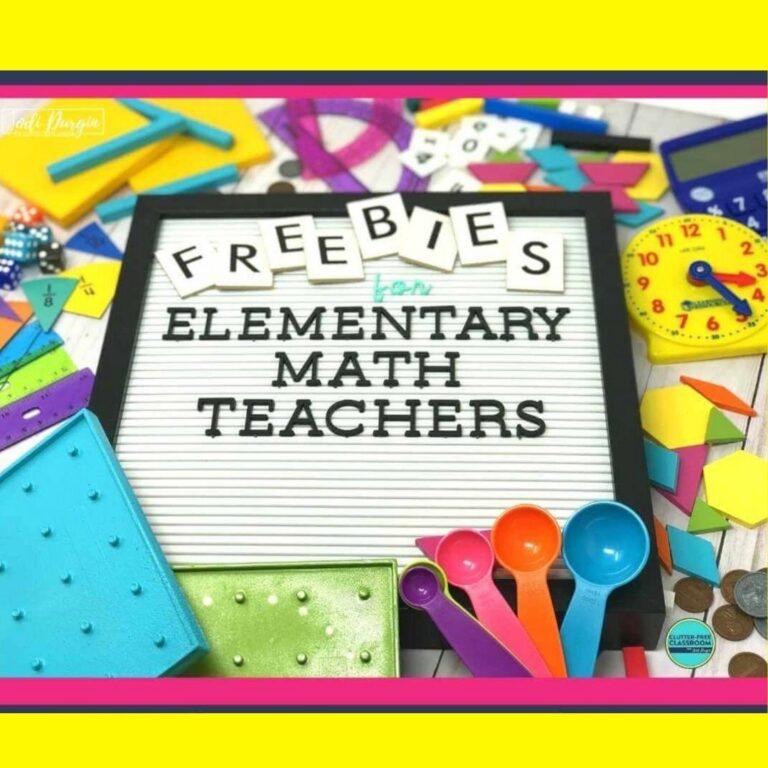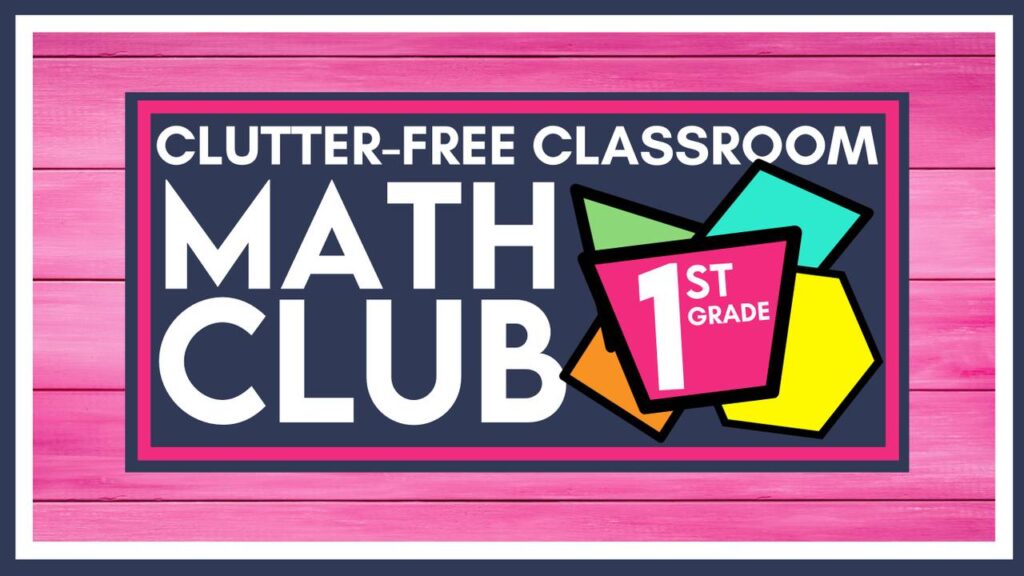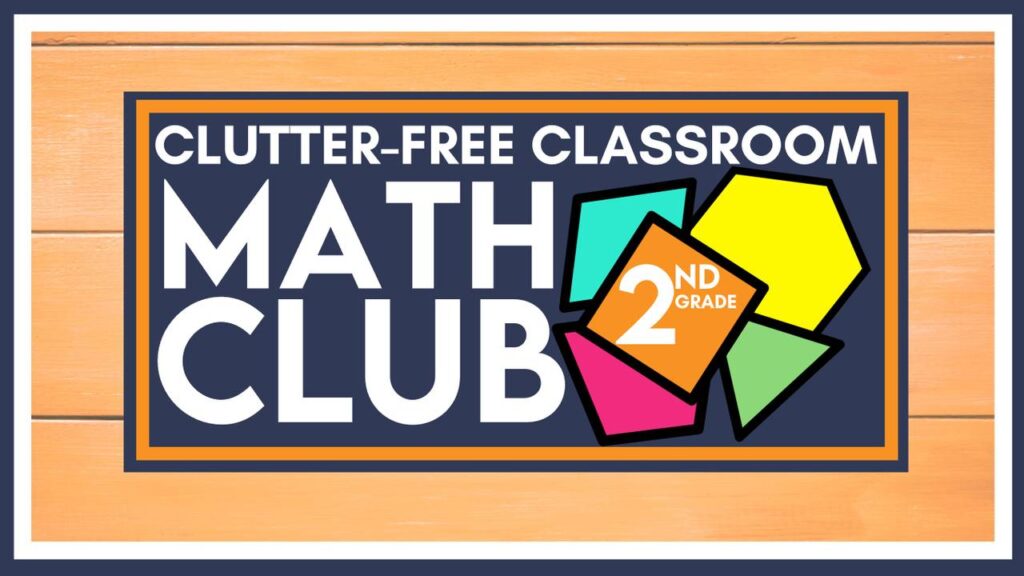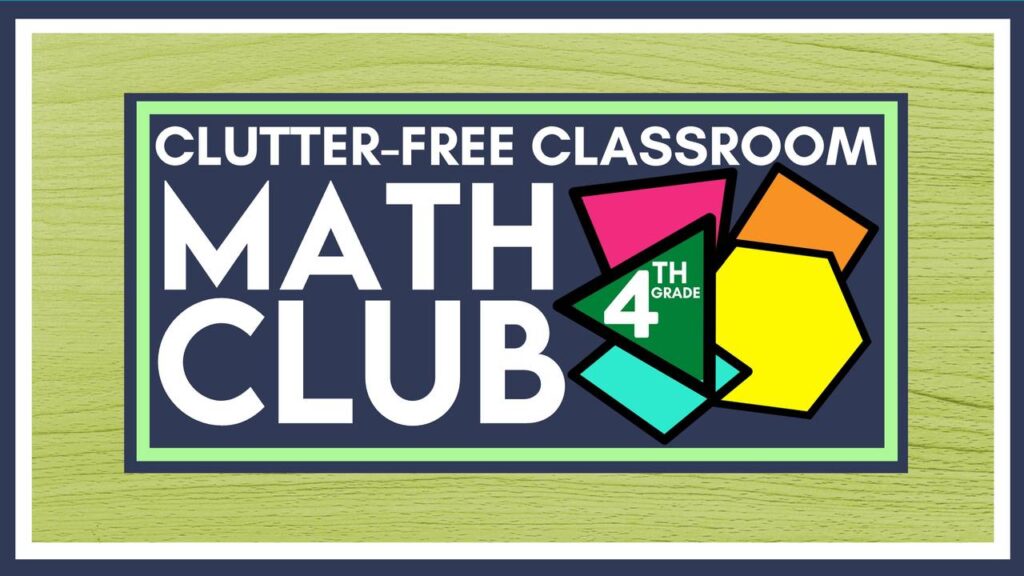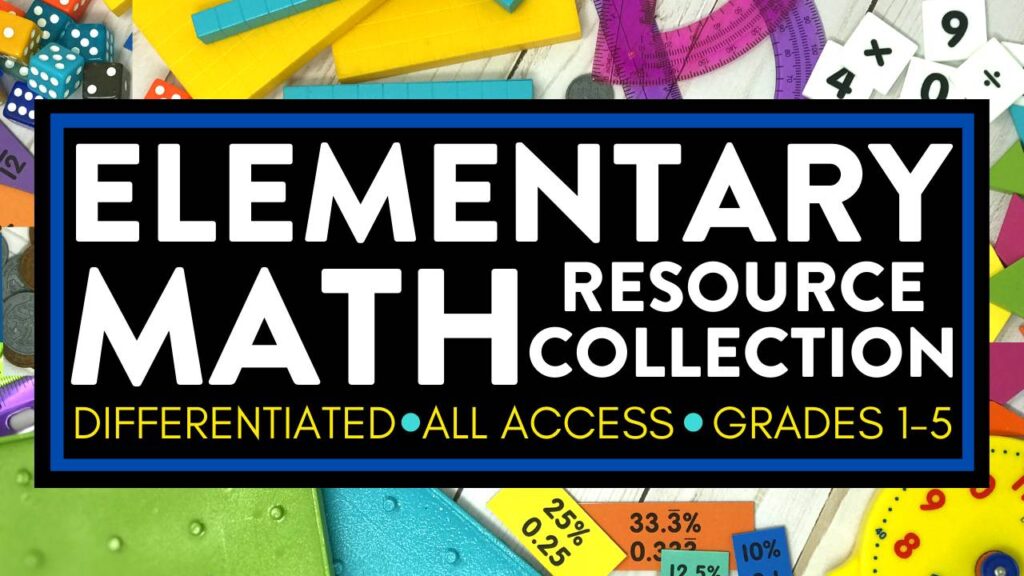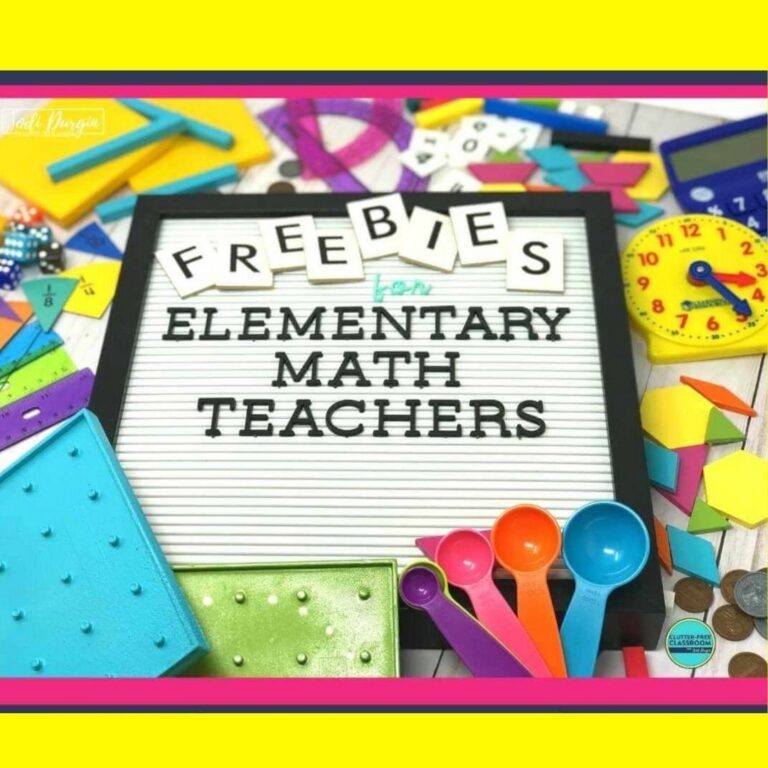Before I go into the details of Guided Math Workshop, let me first tell you about my journey and how I launched the Math Workshop model.
There is no denying that children have changed over the years. Attention spans are shorter and more and more children struggle to sit and focus on traditional teacher-directed lessons. Simultaneously, the demands on educators are greater than ever before. As new requirements are introduced, the time teachers used to have for planning and modifying lessons has been minimized.
This poses two main problems.
The first is the most important one. Regardless of their ability level, kids are not reaching their potential. Struggling learners are pushed along to the next unit without demonstrating proficiency in the current skill. Some aren’t building the solid foundation necessary for the higher level math skills in the future. Advanced students are not challenged enough. They are wasting their days doing worksheets and activities focused on skills they’ve already mastered.
The second is that the current data-driven state of education unfortunately could mean that everything from your job security and pay scale to student placement and qualification for services hinges upon test scores. Admittedly, I loathe testing for many reasons. It is often out of our control so we need to find ways for our students to succeed not only in the real world, but also on their annual performance with a number two pencil and a bubble sheet.
So, what do we do?
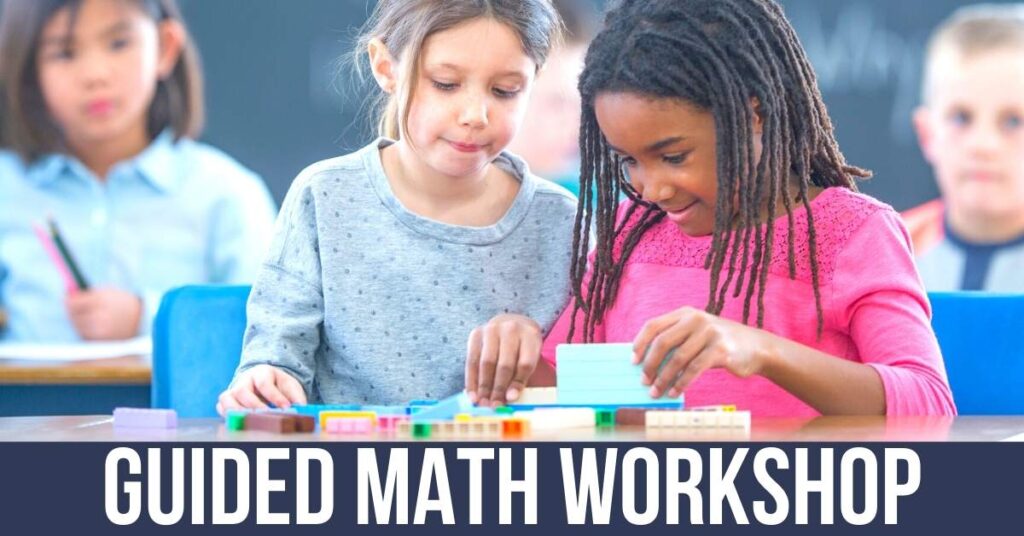
My Journey to Guided Math Workshop
Here is a glimpse into my journey to Guided Math Workshop.
Traditional Way of Teaching Math
Several years ago, I found myself really struggling to get through the math lessons in the district-mandated curriculum. The teacher text outlined lengthy group lessons followed by practice worksheets. The kids were always so distracted during instruction. It never went the way the teacher guide said it would. Then, I would distribute the worksheets that were included for that lesson. Some kids buzzed through them because they were already proficient in the skill. Other kids had no idea what to do because they had been off task during the lengthy lesson (and the previous day’s lesson… and the day before that…). After that, I would send home the related homework page. This resulted in me fielding phone calls, emails, and notes from parents about the frustration it caused at home.
I knew things needed to change. I also knew that my reader’s workshop was going VERY well. Due to implementing my reader’s workshop, I knew where my kids were at as readers. As a result of one-on-one conferencing and small group instruction I was confidently meeting their individual needs.
I analyzed what was working in that academic area and decided to apply it to my math block. At that time (way back in 2009), “Guided Math” and “Math Workshop” were not the buzzwords they are now. I needed to muddle through with trial and error. As a result, I created a math rotation system. With this system, my students were actively engaged in appropriate activities at all times.
New Way of Teaching Math
Each math lesson began with a brief “mini-lesson.” This was taught to the whole class. It was meant to activate their brains and get them thinking about math. When I first began using this model the mini lesson was often based on a portion of the lesson in the teacher guide. I always did my best to make it interactive. One way I did this was by encouraging whole class participation. I did this by asking students to all respond in a nonverbal way with hand signals or to have quick discussions with their “talking partner.”
As part of my classroom management procedures and routines, the students had assigned seats in the group area and a designated “turn and talk” buddy. As time (and technology) progressed, the mini lesson typically included a short BrainPop video, a PowerPoint lesson, or an interactive activity on the Smartboard. I also began to use number talks. The students were still required to actively participate and talk with peers. At the end of the mini-lesson, I presented the learning goal for the day and asked the essential question to frame our thinking.
Following the mini lesson, the rotations began. I like systems and routines and I also like things that are catchy. Therefore, I developed a system for the students to rotate through a series of four stations using the acronym M.A.T.H.
Read below to learn about my M.A.T.H. system and get answers to the most frequently asked questions about guided math workshop.

What is the Math Workshop Model?
The Math Workshop Model is a framework for best practice math instruction. It includes the following components: mini lesson, four centers, and a lesson closing. The four centers follow the acronym MATH. I will go into more detail below about what each of these letters stand for.
What is Guided Math Instruction?
Guided Math Instruction is small group math instruction that helps you meet the needs of all your learners through flexible leveled groupings where you can deliver appropriate instruction. Guided Math small group instruction is teacher-led, data-driven, and falls within the zone of proximal development.
What is the Difference Between Guided Math and Math Workshop?
The difference between Guided Math and Math Workshop is that Guided Math is one of the four centers that falls within the larger Math Workshop framework. In other words, the whole math block is called Math Workshop. Guided Math is one of the centers within it. The two work together to create an ideal learning situation for students.
What is Guided Math Workshop?
Guided Math Workshop, also known as Math Workshop with Guided Math, is the Math Workshop framework integrated with Guided Math instruction. It can be used with any math text, curriculum, or set of standards.
Guided Math Workshop involves teaching students with similar academic needs in a small groups setting. While the teacher is working with one group of children, the others are engaged in a variety of related tasks within the classroom called Math Workshop rotations. They may be working independently, with a partner, or within a small group. While the tasks are similar, they are differentiated to align with the students’ individual abilities. This allows the teacher to challenge and offer enrichment to children who are ready and provide those who have not yet fully grasped a concept the support they need to become proficient. Guided Math Workshop empowers the teacher to address different learning styles and keep all students fully engaged in their learning.
What are Guided Math Groups?
Guided Math Groups are small groups of students (typically 4-6) that are formed using data from formative assessments. These groups change throughout the school year. For example, a teacher may give a pre-assessment prior to starting their geometry unit. Students will be put into groups based on their performance on the pre-assessment.
What are the Benefits of Math Workshop?
There are tons of benefits for both teachers and students for using a Math Workshop framework.
The students are. . .
- engaged
- enjoying math
- gaining new understandings
- learning to work collaboratively with peers
- learning at their current ability level
- meeting with success
- becoming self-confident
- participating in activities that match their learning styles
- putting their thinking into words
- teaching and learning from others
The teachers are. . .
- aware of each student’s current ability level
- efficient in instruction
- able to meet individual needs
- effectively providing all students with appropriate instruction
- confident and successful
Why is Guided Math important?
Guided Math is important for the following 5 reasons:
1. Guided Math allows you to meet children at their current ability level and work with them in the zone of proximal development.
Students who need interventions and remediation receive the support, while students who have mastered the grade level skill can be enriched, challenged, and their potential is taken to the next level.
2. Guided Math enables you to incorporate the mathematical practices.
New standards require students to think deeply. Kids should not only be showing their thinking on paper, but also explaining and discussing their thoughts with peers and adults. The small group format makes this easy!
3. In a small Guided Math group, all your learners can ask and answer questions.
Children perform differently in a small group setting. Not only are there children who struggle to focus in a whole class learning situation, but there are also children who are too shy or anxious to speak up in a group. There are also children who would share in a class discussion, but are unable to because stronger personalities take over.
4. Teachers gain clarity on each child’s strengths and weaknesses.
Watching them work through problems and listening to their questions and explanations enables the teacher to correct misconceptions in real time. When a child performs a paper and pencil task incorrectly, they may do so multiple times on the same paper. That misunderstanding then becomes committed to memory.
5. It makes your job as a teacher easier.
You will save time planning and correcting because you are not scripting lessons and spending hours correcting worksheets. You are assessing the children as you listen and observe. Your teaching is organic and modifications happen as you see they are needed, not as you anticipate them to be needed on a Sunday night in your living room when you write formal plans for the week. You will not need to review assessments and written work in preparation for a team meeting or parent teacher conference. Instead, you will know each of your students intimately as mathematicians and will be able to speak confidently on their behalf at any time.
What does Math Workshop Look Like?
There are 3 main components of Math Workshop:
- Mini Lesson
- 4 Centers (M.A.T.H.)
- Lesson Closing
What is a Math Mini Lesson?
A math mini-lesson is a 8-12 minute whole group lesson. The classroom teacher delivers it. It takes place at the beginning of the math block. It may include anything from introducing a new skill, center or game, to modeling a journal entry, to reading aloud math literature that relates to the current concept.
At the start of the year, you will spend many of the mini-lessons discussing, modeling, and reviewing expectations and procedures. As the year continues, this brief instructional time will become more academic. I go into a lot more detail into this in my Guided Math Workshop course (coming soon).
What are the 4 Math Workshop Centers?
When I decided to implement this method of instruction in my classroom, I knew I wanted a work board with a catchy acronym. The Math Workshop rotation board includes four quality Math Workshop stations that spell out M – A – T – H. The workboard is one of the most important management tools in my classroom.
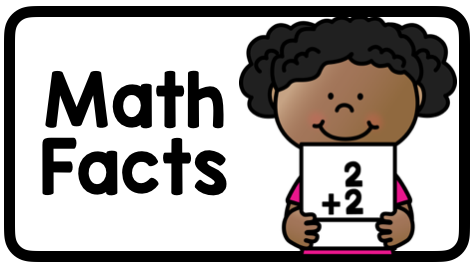
M = Math Facts
The M stands for math facts. This is where students practice fact fluency skills. It could be mad minute pages, flash cards, online programs, dice games with a partner, memory match with facts or anything else that had them continuing to work on the automaticity of facts needed for higher level math concepts.

A = At Your Seat Work (Independent Practice)
The A stands for At Your Seat. Here, students complete paper and pencil tasks. This is also where they work independently. It’s a good option if you are required to work in worksheets from your curriculum. I used any of the spiral review math pages that had not been used for homework in this area. It was also a great station for working with review task cards. I also used this station for math vocabulary activities, number of the day and math journals. Because the expectation of this station is quiet, independent work, it prevents the room from getting too noisy. The students have the option of working at desks or around the classroom using clipboards.
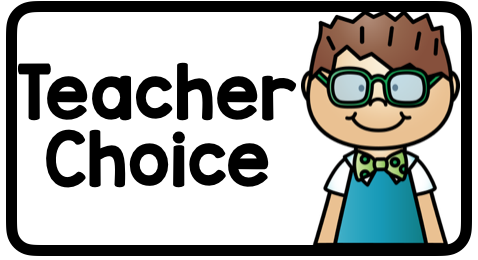
T = Teacher’s Choice (or Technology)
The T originally stood for “Teacher,” but I changed it to “Teacher’s Choice.” On most days, the students in this station could be seen sitting with me at the small group table working on a Guided Math lesson. However, I learned there were days where my attention was needed in a different area of the classroom. I liked having the flexibility to assign an activity to the kids in this station, so I was free to assist where needed. There were also days when I would say “Today the T will stand for Technology, because as Teacher’s Choice I am going to have you work on iPads.”
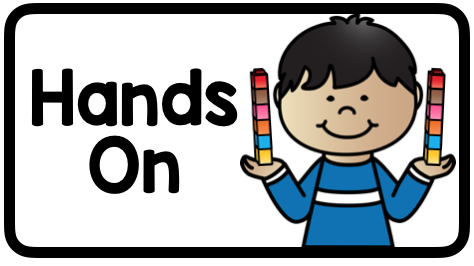
H = Hands On Activities
The H Stands for “Hands-On.” In this station kids use manipulatives, do project-based learning tasks, play math games, etc. Basically it is anything that is not a paper and pencil task and involves manipulating objects. Typically these were done with partners. To keep the noise level down, I found it helpful to assign areas around the classroom for them to work. This worked much better than having them clustered in one area.
We closed out each Math Workshop with a closing meeting. Students would share with their talking partner what they did during the workshop. Some would share work samples. We revisited the essential question and discussed what we learned. There was always a verbal or written exit slip to wrap up the experience.
What is the Math Workshop Closing?
The closing is a time for reflecting, clarifying, sharing, and assessing. After working in stations, the students are all brought back together as a whole group. During this very important part of the daily workshop, the children have an opportunity to talk about their work with their learning partner and the whole group. They can also ask questions, share strategies and project status, compare findings, or take a quick exit ticket or other formative assessment.
What does Guided Math Look Like?
Guided Math looks like a small group of students working with the teacher at a small group table. Students are fully engaged in their learning. They have a pencil, their math tool kits with plenty of math manipulatives, and have access to other helpful tools like a small white board, white board marker, eraser, and math posters. They are using math talk while discussing grade level concepts and skills.
3 Resources to Help You Implement Guided Math Workshop
If you are excited to launch Guided Math Workshop in your classroom, I recommend checking out these 3 resources:
1. Guided Math Workshop eBook
This Guided Math Workshop Guide includes 150+ pages of practical tips and advice for how to create a Guided Math Workshop system, form Guided Math groups, plan mini lessons and Guided Math lessons, and assess and document student growth. It includes lesson plans for the first 10 days of launching Guided Math Workshop.
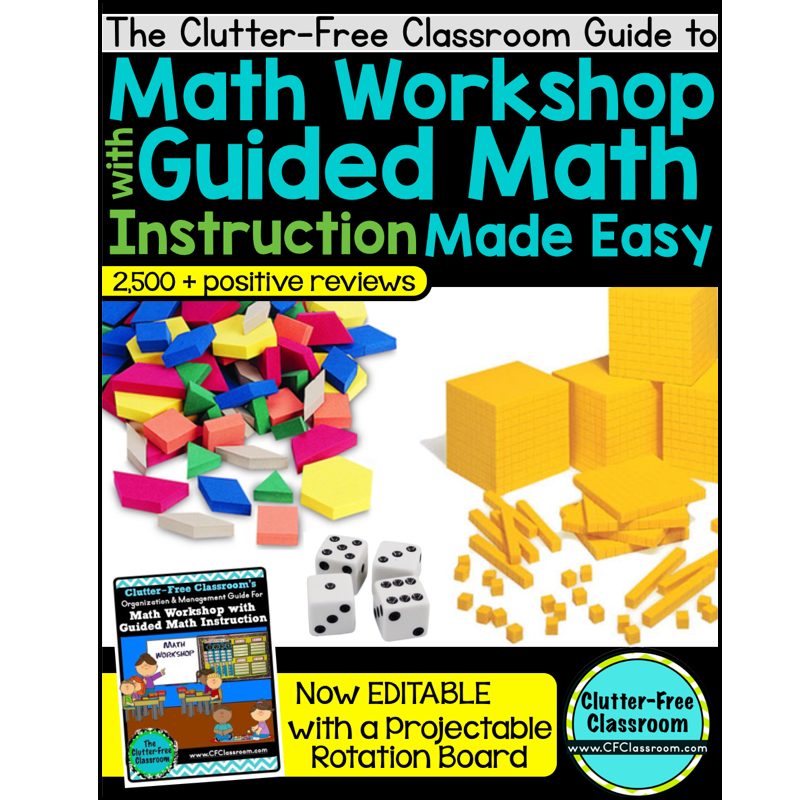
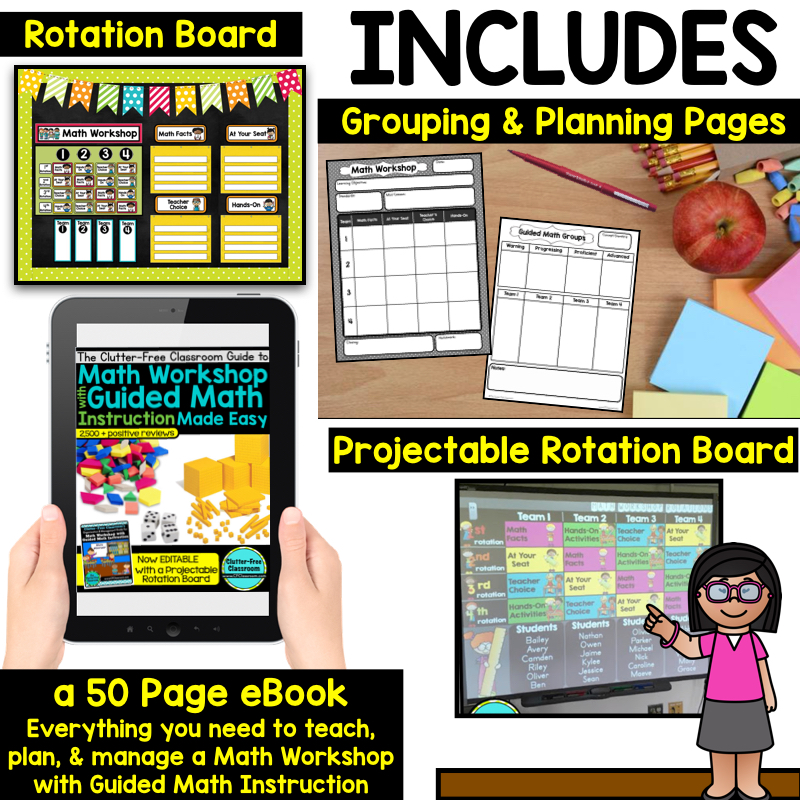
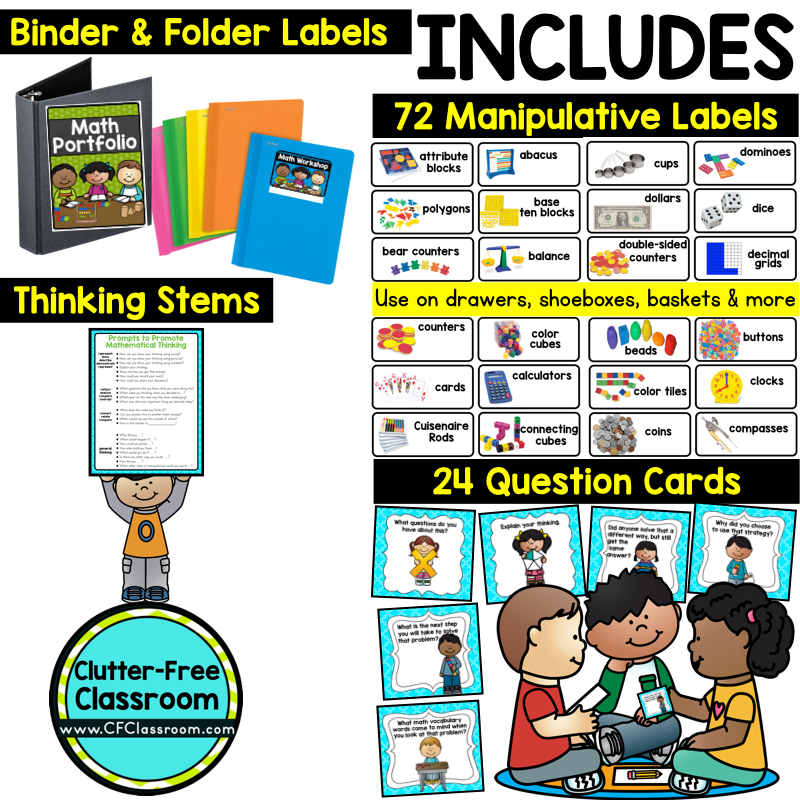
2. Guided Math Workshop Course
This digital Guided Math Workshop course includes the eBook as well as instructional videos that will walk you step-by-step with how to successfully and confidently launch Guided Math Workshop in your elementary classroom.
3. Elementary Math Resource Collection
If you have already taken the course or read the eBook or have already successfully launched Guided Math Workshop in your classroom, but need math center activities and games, then purchase this massive collection of math resources.
Try a Collection of our Math Resources for Free!
We hope this information about Guided Math Workshop is helpful! Next, we would love for you to try these math resources with your students. They offer elementary students opportunities to practice grade level concepts and skills in fun and engaging ways. You can download worksheets specific to your grade level in our free printable math resources bundle. Use this link to access them: free printable math activities for elementary teachers.
Check out these other math resources!

